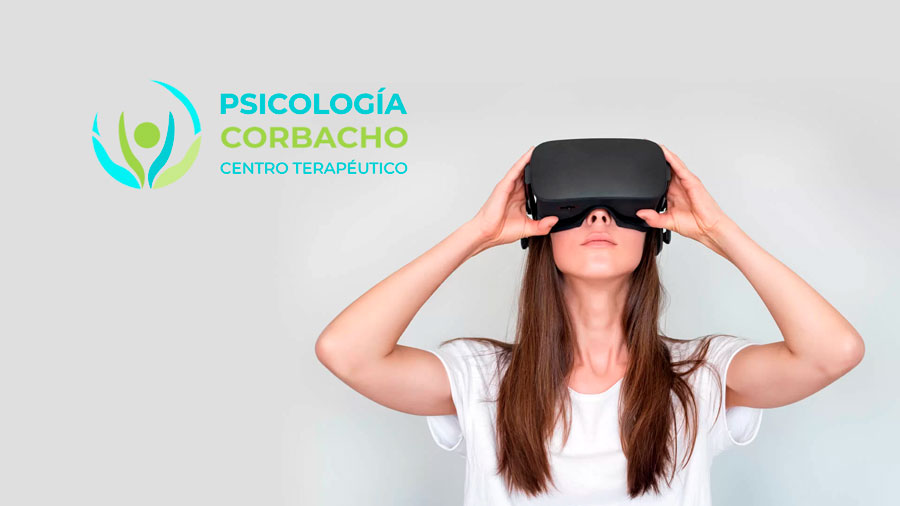Therapies






Table of contents
Virtual reality therapy: benefits and applications in mental health
Virtual reality therapy is an innovative technique that combines advanced technology with traditional therapeutic methods. Using devices such as virtual reality goggles and headsetsIn this way, controlled environments are created where patients can confront and manage their fears. This modality of therapy has proven to be effective in treating various disorders such as anxiety, depression, phobias and obsessive-compulsive disorder.. In addition, it allows designing customized exposure strategies for each patient, offering an immersive and safe experience.
What does virtual reality therapy consist of?
Psychological therapy with virtual reality is an innovative methodology that integrates advanced technology with traditional psychotherapy.This tool allows the creation of controlled and secure virtual environments. This tool offers an immersive experience where the patient can face and work on their fears or psychological problems. under the supervision of the therapist.
Through the use of virtual reality devices, such as goggles and headsets, interactive graphics are projected to recreate various situations. These three-dimensional environments allow the patient to interact with scenarios that may generate anxiety or fear, but in a framework of total safety and control..
- Exposure to anxiety-provoking situations in a safe and gradual manner.
- Management and monitoring of patient progress by means of biofeedback sensors.
- Personalized treatment tailored to the patient's specific needs.
This technique allows the therapist to monitor the patient's emotional and physical responses in real time, adjusting sessions as needed. In this way, more accurate and effective support can be provided in the treatment of various mental disorders.
Benefits of virtual reality therapy
Virtual reality therapy offers multiple advantages that make it an effective and safe alternative for the treatment of various psychological disorders.
Security and control
One of the main benefits of virtual reality therapy is the safety it provides to patients. By recreating controlled three-dimensional environments, it is possible to face fears and phobias without real risk.. This allows for a protected environment where the patient can safely experience and manage their emotions.
The therapist has full control of the virtual environment, which facilitates the gradual introduction of anxiety-provoking stimuli.. This ability to adjust the intensity and duration of exposures helps to minimize the risk of emotional overload.
Proven efficacy
Numerous research studies have demonstrated the effectiveness of virtual reality therapy in treating a variety of psychological disorders. It has been observed that this therapeutic modality is as effective, and in some cases even more effective, than traditional therapies. of live exposure or imaginative techniques.
The ability to recreate realistic scenarios allows for more intense and controlled exposure, which contributes to rapid and sustainable therapeutic results. Biofeedback technology also plays a crucial role, since it allows for real-time monitoring of the patient's physiological responsesadjusting the intervention as necessary.
Customized exposure strategies
Virtual reality therapy allows the design of highly personalized exposure strategies. Each session can be tailored to the specific needs of each patient.The virtual scenarios and the level of difficulty can be adjusted according to individual progress.
This personalized approach facilitates the creation of a more effective treatment plan.specifically addressing the patient's particular triggers and fears. The possibilities are virtually limitless, from flight simulation for those with a fear of flying, to height recreation for those suffering from acrophobia.
Comparison with traditional techniques
Compared to traditional exposure techniques, virtual reality therapy has several distinct advantages. Whereas imagery techniques rely heavily on the patient's ability to visualize feared situations, virtual reality provides an immersive and tangible experience.
- Greater realism: the simulation of virtual reality environments is more realistic and detailed than simple imagination, which can lead to greater therapeutic effectiveness.
- Total control: the therapist can control every aspect of the virtual environment, which is not possible in live exposures.
- Accessibility: some real-life exposure scenarios may be difficult or impossible to recreate safely. Virtual reality makes these scenarios accessible without physical risks.
- Continuous monitoring: through the use of biofeedback technology, it is possible to measure and record the patient's physiological responses in real time, improving the accuracy of the treatment.

Areas of application of virtual reality therapy
Virtual reality therapy has a wide range of applications within the mental health fieldThe treatment of various disorders can be addressed in an effective manner.
Anxiety disorders
Generalized anxiety
In the treatment of generalized anxiety, virtual reality offers controlled scenarios where patients can face situations that generate constant worry. This allows them to develops skills for managing uncertainty and reducing anxiety levels.
Social anxiety
For social anxiety, virtual reality enables the creation of simulated environments in which patients practice social interactions. These scenarios help improve confidence in real-life social situationsallowing a gradual and safe approach.
Depression
Coping strategies
Virtual reality is used to teach effective coping strategies in the management of depression. Virtual environments provide a safe space for patients to practice relaxation and mindfulness techniques..
Cognitive-behavioral techniques
Cognitive-behavioral techniques in virtual reality environments allow patients to identify and modify negative thought patterns. With the guidance of the therapist, patients may be confronted with situations that they previously avoidedimproving their mood and functionality.
Specific phobias
Fear of heights
Fear of heights can be effectively treated by gradual exposure to virtual environments that simulate elevated situations. In this way, patients learn to cope with and manage their fear in a safe and controlled environment.
Fear of flying
For those who are afraid of flying, virtual reality makes it possible to recreate complete flight experiences from take-off to landing. This helps to desensitize fear and practice relaxation techniques during the simulated "flight".
Obsessive-Compulsive Disorder (OCD)
Exposure with response prevention
In the treatment of OCD, exposure with response prevention is a key technique. Virtual reality allows patients to be exposed to situations that trigger their compulsions, while learning to resist the urge to perform compulsive behaviors.
OCD-specific applications
Virtual environments can be customized to address specific obsessions and compulsionsThe program offers a controlled exposure that facilitates the learning of new responses and the reduction of OCD symptoms.
Post-traumatic stress disorder (PTSD)
Controlled re-experimentation of trauma
Virtual reality therapy for PTSD allows controlled re-experiencing of trauma in a safe environment. This facilitates desensitization and processing of the trauma in a gradual and therapist-guided manner.
Management of emotional reactions
The management of emotional reactions in PTSD patients is optimized through virtual reality, which provides a space where patients can learn to identify and regulate their emotional responses to traumatic memories.
Treatment of chronic pain
Distraction from pain
Virtual reality is used in the treatment of chronic pain as a method of distraction. Patients can immerse themselves in relaxing virtual environments, which helps to divert attention away from the pain and reduce pain perception.
Relaxation techniques
Relaxation techniques in virtual reality provide chronic pain patients with effective tools for relaxation and pain management.r. Guided virtual environments can include breathing exercises, meditation and visualization.
Corbacho Psychology and VR technology used
We now offer innovative technologies and controlled environments for the treatment of various mental disorders.
Approach and services offered
Centro Psicología Corbacho, located in San Martín de Valdeiglesias, specializes in psychological therapies using virtual reality. Its approach combines traditional therapeutic techniques with advanced virtual simulators, thus providing a safe and controlled environment for patients.
Among the services offered are exposure sessions for the treatment of various phobias, as well as therapies for anxiety disorders and depression. The virtual scenarios are tailored to the individual needs of each patient, providing an immersive experience that facilitates the therapeutic process.
Types of disorders treated
- Generalized anxiety.
- Social anxiety.
- Depression.
- Specific phobias: fear of heights, fear of flying, among others.
- Obsessive-compulsive disorder (OCD).
- Post-traumatic stress disorder (PTSD).
- Chronic pain.
- Agoraphobia.
XR.health technology
Platform features
The technology of xr.health, formerly known as Amelia Virtual Careis a pioneer in the use of virtual reality for psychological therapies. This system offers a wide range of virtual scenarios specifically designed to treat different mental disorders. The platform allows therapists to dynamically adjust environments and monitor patient responses in real time.
Advantages of using xr.health
- Highly immersive environments that facilitate controlled exposure
- Customization of scenarios according to the patient's needs
- Real-time monitoring by means of biofeedback sensors
- Detailed record of the sessions to evaluate the patient's progress
Procedure of a virtual reality therapy session
The process of a virtual reality therapy session is structured in several phases that ensure an effective and personalized treatment for each patient.
Initial evaluation
Patient diagnosis
In the first phase, the therapist performs a complete evaluation of the patient. This evaluation includes a medical history, identification of symptoms and an understanding of the specific problems to be treated.
Questionnaires and interviews can be used to obtain a detailed picture of the patient's emotional and mental state.
Therapy objectives
Once the diagnosis has been made, therapeutic objectives are established. These goals are personalized and vary according to the patient's needs. Clarity in the objectives helps to design a specific and effective treatment plan.
The patient and the therapist agree on these goals togetherensuring that both are aligned for the success of the therapy.
Configuration of the virtual environment
Scenario selection
The therapist selects the most appropriate virtual scenarios for treatment. These scenarios are designed to recreate situations that patients find challenging, such as flying, heights or enclosed spaces.
The choice of scenarios is based on previously established therapeutic objectives. and adjusted to provide a relevant and beneficial experience.
Customized settings
Each virtual environment can be tailored to the specific needs of the patient. These settings can include stimulus intensity, exposure duration and other parameters to ensure a safe and controlled experience.
Personalization allows therapy to be effective and that the patient feels comfortable throughout the process.
Development of the session
Interaction with the virtual environment
During the session, the patient interacts with the virtual environment through virtual reality devices such as goggles and headsets. This immersive interaction allows the patient to face their fears and anxieties in a safe environment..
The therapist guides the patient through the process, providing support and adjusting the experience as needed..
Biofeedback monitoring
Biofeedback monitoring is a crucial tool during the session. Biofeedback sensors measure patient's physiological responsessuch as heart rate and anxiety levels. These data are analyzed in real time by the therapist.
Biofeedback allows immediate adjustments in the sessionThe patient does not feel overwhelmed and the treatment is as effective and safe as possible.
Subsequent evaluation and adjustments
Analysis of results
After each session, an evaluation of the results is carried out.. The therapist and patient review biofeedback data and experiences during the session to assess progress toward therapeutic goals.
This ongoing analysis allows the treatment plan to be adjusted as necessary to maximize the effectiveness of the therapy.
Modifications in treatment
Based on the analysis of the results, treatment modifications can be made. These adjustments may include changes in virtual scenarios, intensity of exposure, or incorporation of new therapeutic techniques.
Flexibility in treatment ensures that strategies are adapted to the changing needs of the patient, thus optimizing long-term results.
Frequently asked questions about virtual reality therapy
Virtual reality therapy raises many questions among those considering this innovative technique to treat their psychological disorders.
Is virtual reality therapy safe?
Safety is one of the main advantages of virtual reality therapy.. The devices and virtual environments are designed to be safe and non-invasive. During sessions, a qualified therapist continuously monitors patient exposure and adjusts settings as needed, minimizing risk. Biofeedback sensors also allow real-time monitoring of patient responses, ensuring a controlled experience.
How many sessions are necessary?
The number of sessions required varies according to the type of disorder and individual patient response to treatment. Generally, a minimum of 5 to 10 sessions is required to see significant improvementalthough some patients may need more time. The therapist will continually assess progress and adjust the treatment plan accordingly.
Who can benefit from this therapy?
Virtual reality therapy is suitable for a wide range of psychological disorders and is useful for anyone experimenting:
- Anxiety disorders, such as generalized anxiety and social anxiety.
- Depression, including the use of coping strategies or cognitive-behavioral techniques.
- Specific phobias, such as fear of heights or fear of flying.
- Obsessive-compulsive disorder (OCD), through techniques such as exposure with response prevention.
- Post-traumatic stress disorder (PTSD), facilitating the controlled re-experiencing of the trauma and the management of emotional reactions.
- Chronic pain, using methods such as pain distraction or relaxation techniques.
Virtual reality therapy is also beneficial for those who prefer a more practical and controlled alternative to traditional exposure techniques.
What equipment is needed for the sessions?
The equipment used in virtual reality therapy sessions includes:
- Virtual reality glasses to provide an immersive experience.
- Headphones that enhance the virtual environment with sound effects.
- Biofeedback sensors to monitor the patient's physiological responses.
The therapist will be in charge of setting up and adjusting the equipment so that the patient feels comfortable and safe during the session.
How to start psychological therapy with virtual reality?
Starting psychological therapy with virtual reality is a simple and organized process. Below, we explain the steps to request an appointment, as well as the necessary preparation for the first session.
How to make an appointment
Online application
Requesting an appointment for virtual reality therapy through our web platform is quick and easy. You just need to access our website and fill out an application form with your personal data and a brief description of your therapeutic needs or click on the request appointment button.
First consultation
Once the online application is submitted, we will arrange an initial face-to-face or virtual consultation. In this initial session, the therapist will conduct a preliminary assessment to determine if virtual reality therapy is right for you and design a personalized treatment plan.
Preparation for the first session
Information to be provided
Prior to the first session it is essential to provide certain information. This includes:
- Medical and psychological history
- Current medications
- Specific symptoms and concerns
- Therapeutic objectives
This information helps the therapist to personalize the treatment. and choose the most appropriate virtual reality scenarios for your situation.
Patient expectations
It is important that you come to the first session with a clear idea of your expectations. Virtual reality therapy is an interactive and collaborative process.. Patients should be prepared for:
- Actively participate in the sessions.
- Provide feedback on their experiences.
- Commit to the treatment plan.
- Communicate any discomfort or discomfort during the sessions.
Being informed and prepared can significantly improve the effectiveness of therapy and help you reach your mental health goals more quickly and efficiently.


